
At the time, it was a little joke. That is, until a couple of months ago, when I was put to a major supersleuthing task.
Back in February, when we were driving home from going to see The Who, my dad was on an antiquing adventure. For reasons still unknown to me, he wanted to stop at every curio shop between Tulsa and home. Usually, I'm OK with doing little stops along the way -- after all, that's part of the adventure. His stops that day, though, were excessive. At one point, I stopped putting my seat belt back on, because the odds of being hit by a car seemed smaller than the odds of us stopping at another branch of Auntie Wainwright's.
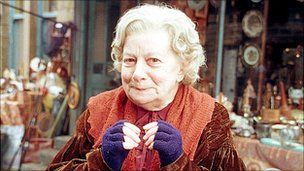
We had already been to a few cold buildings that morning, I was developing a migraine, and growing more highly irritated with every "hey, let's go to that one!" he exclaimed as he made sharp turns into the eroding drives of the crumbling buildings dotting the highway -- then, before I knew it, I was crawling back out of the car into the biting winter air, saying to my mother, "if he wants to go to one more, I'm waiting in the car". When we walked past the threshold, I was pleased to feel a blast of heat on my chilled little frame. I was further placated with chocolate biscuits, and left to wander about the place at my leisure. And, let me tell you, those chocolate biscuits were sinfully delicious that morning. What with the lovely nibbles, I didn't mind being there; dare I say it, I was enjoying wandering in and out of little heated rooms, dribbling crumbs on my hideous travel jacket (yes, I know how ugly it is, that's why I wear it when I travel: I don't especially care if it gets destroyed).
It felt like we were there for ages, but I eventually reached the final room. It was a large space, with expansive windows, and rows of glass cases lining the walls. In the middle of the room were little cubicles, stuffed to brimming with an assortment of nick knacks and paddy whacks. In one of those teensy cubicles, I found something that immediately caught my eye. I don't know how long I stood there staring at it before my mother found me, and told me it was time to go. I, apparently, didn't pay too much attention to her, because she asked, "do you want to buy it?"
I couldn't help but be enamored with it. I felt like it had a story to tell me, and I was instantly compelled to find out what that story might be. As I carried it to the front of the shop to pay for it, I reasoned with myself that, regardless of what tale the object would tell, I liked it for what it was.
The next day, when we were finally home, I unwrapped the piece from it's newspaper, and prepared it for investigation. What I ended up with was this...
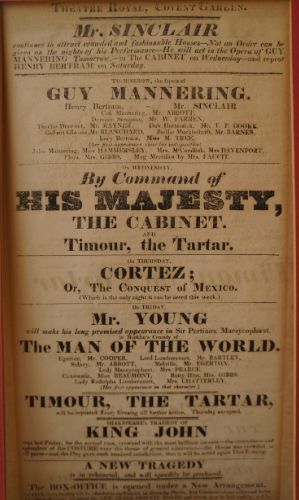
At first glance, it looked like a newspaper page that someone had framed. The paper itself appeared thin and yellowed from time, and the ink is obviously aged. Knowing what little I do about older things, it looked like the picture had been framed in the 30s or 40s, and the print inside looked somewhat Victorian to me. Upon prying it out of the frame, I noticed that the paper is in much better condition than I originally gave it credit for, especially for guessing that it's at least ninety or so years old. It also revealed itself to be a playbill, as there is nothing printed on the reverse side.
I decided the best place to start unraveling the playbill's story was with the theatre itself. A quick Google search revealed the first piece to the puzzle: the theatre's first performance was in 1734, and, in 1892, the Theatre Royal, Covent Garden was renamed the Royal Opera House. Logically, this gave me a start date -- a much earlier date than I first imagined.
With a time frame to work in, I knew I could start narrowing it down to a more specific date. It seemed pertinent to see if I could figure out which His Majesty the royal command performance was going to be for. I'm an American, I know little to nothing about the history of the British monarchy; again, Google to my rescue. At this point, it could either have been King George II, III, IV, or King William IV. At least it's a place to start.
Knowing I wouldn't get far just by looking for which king it could be, I decided it would be a good idea to investigate the performers. Mr. Sinclair's name is most prominent, so I thought that Googling him would be a logical next step. It was here that I started to bridge the major gap I needed. I should have known this would be the pivotal point in the search: the very first link I clicked was an etching of Mr. John Sinclair (no, not that one) as Orlando in The Cabinet -- you know, the royal command performance piece.
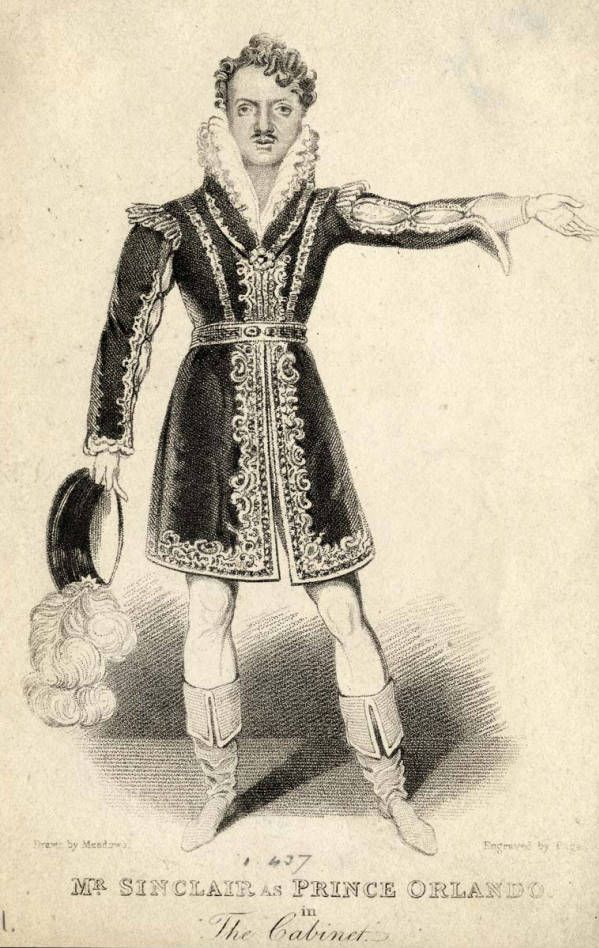
Pleased to know he had been in that part, I tracked down his birth and death dates; doing so eliminated King George II. As I was looking over the print for more keywords, something struck me as important: one of the actresses listed as appearing in Guy Mannering was a Miss M. Tree, and, beneath her name, it reads, "(her first appearance since her indisposition.)" Abandoning the Sinclair search, I tried to track her down. The first mention of an "indisposition" I could find was in a volume of "Theatre in Dublin". Entered as Wednesday, August 9, 1820, "deferred from 8 August on account of the indisposition of Miss Tree." This little bit of information eliminated the possibility of King George III being in attendance of the command performance.
So, how long was Miss Tree indisposed? Good question. It took some digging before I found this site detailing the text of another playbill. Miss M. Tree and her sister made their reappearance on August 16, 1822.
With the date beginning to narrow itself down, I thought it would benefit me to see if I could identify that any of the plays on the bill were performed in the theatre beginning in 1822. Back to searching for the Theatre Royal. I decided to start with Shakespeare's King John, thinking that something well known to a moron like me would have been important enough to write down as having been performed somewhere. An article from this site appeared, with a paragraph detailing how the attention to details in the theatre's production of King John in 1823 helped to boost theatre revenue, saying "receipts of from £400 to £600 nightly soon reimbursed the management for the production; and a complete reformation of dramatic costume became from that moment inevitable upon the English stage." The paragraph also mentioned that the theatre was under new management, as is touted at the bottom of the playbill. The source listed was a copy of the Illustrated London News in 1846.
I felt like I was close enough to finding out the exact date, but wasn't happy leaving it there. John Sinclair seemed too important to ignore; I had to go back, and find out more about his career. After some biographical digging, I confirmed from not one, but two sources that Sinclair performed as Orlando in a comeback performance on November 19, 1823. This information pretty effectively suggests that King George IV was in attendance of the royal command performance.
I still wasn't happy with suggestions. It's like I told my mother, "he was a reigning monarch, there has to be some record of his whereabouts that day". And, by jove, I was determined to find out what he was doing. 'Cause I'm nosy like that. In the process of figuring out if he was there or not, I found another playbill advertising the November 19 performance, but this second bill makes no mention of the king. The discovery of another playbill shook my confidence for a brief moment. I began to doubt my trail of discovery until I found a copy of an article written in 1889. Scattered between dates and names of people I don't know was the single line that satisfied my supersleuth-y-ness almost completely. The article states, "[e]xcept to open and prorogue parliament, he made no public appearance in London after his visit to the two theatres in 1823." Apparently he was self-conscious about his dropsy symptoms, and this playbill is advertising what became one of the final two public appearances made by the monarch.
There was just one more thing I felt like I needed to check before I was 100% sure I had followed all of the right trails. On my playbill, it says the command performance was performed on a Wednesday; the digital playbill also says that The Cabinet was performed on Wednesday. All I wanted to make sure of was that November 19, 1823 was, indeed, on a Wednesday.
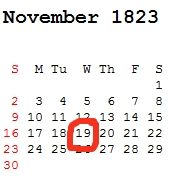
So, what I thought would look really neat next to my Lord Kitchener print...
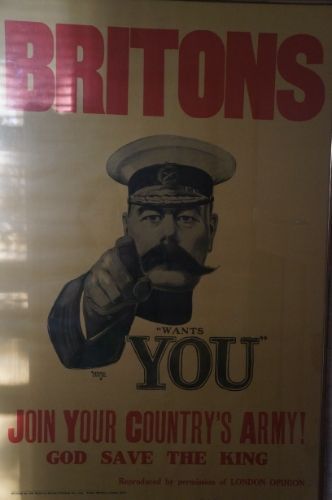
...ended up being quite a lot more than I bargained for.
The moral of the story, I suppose, is that you really can Google anything.

And, if that isn't it, then I think it just means that you really do have to hide things well if you want to keep them from me.

